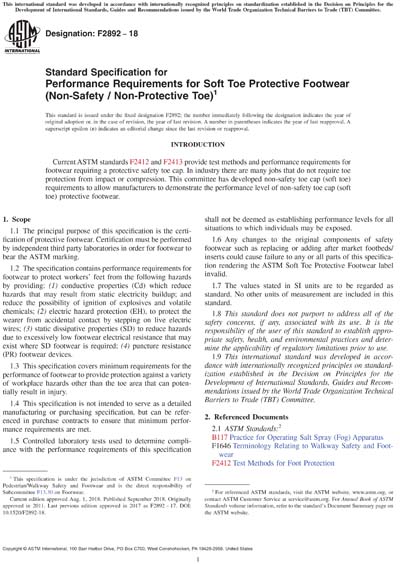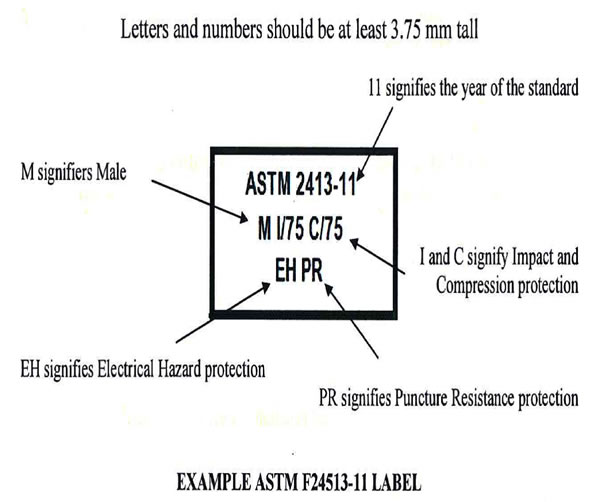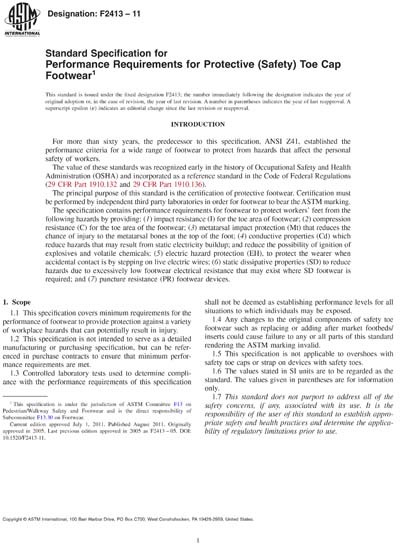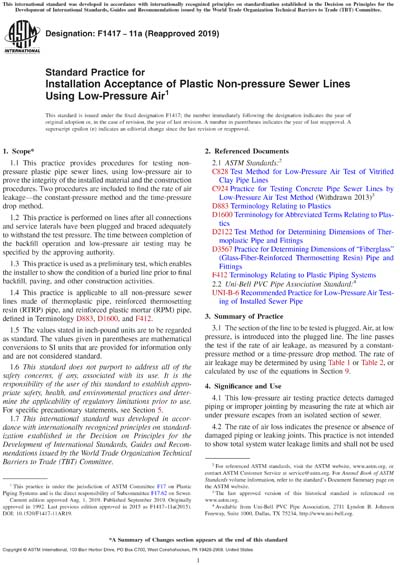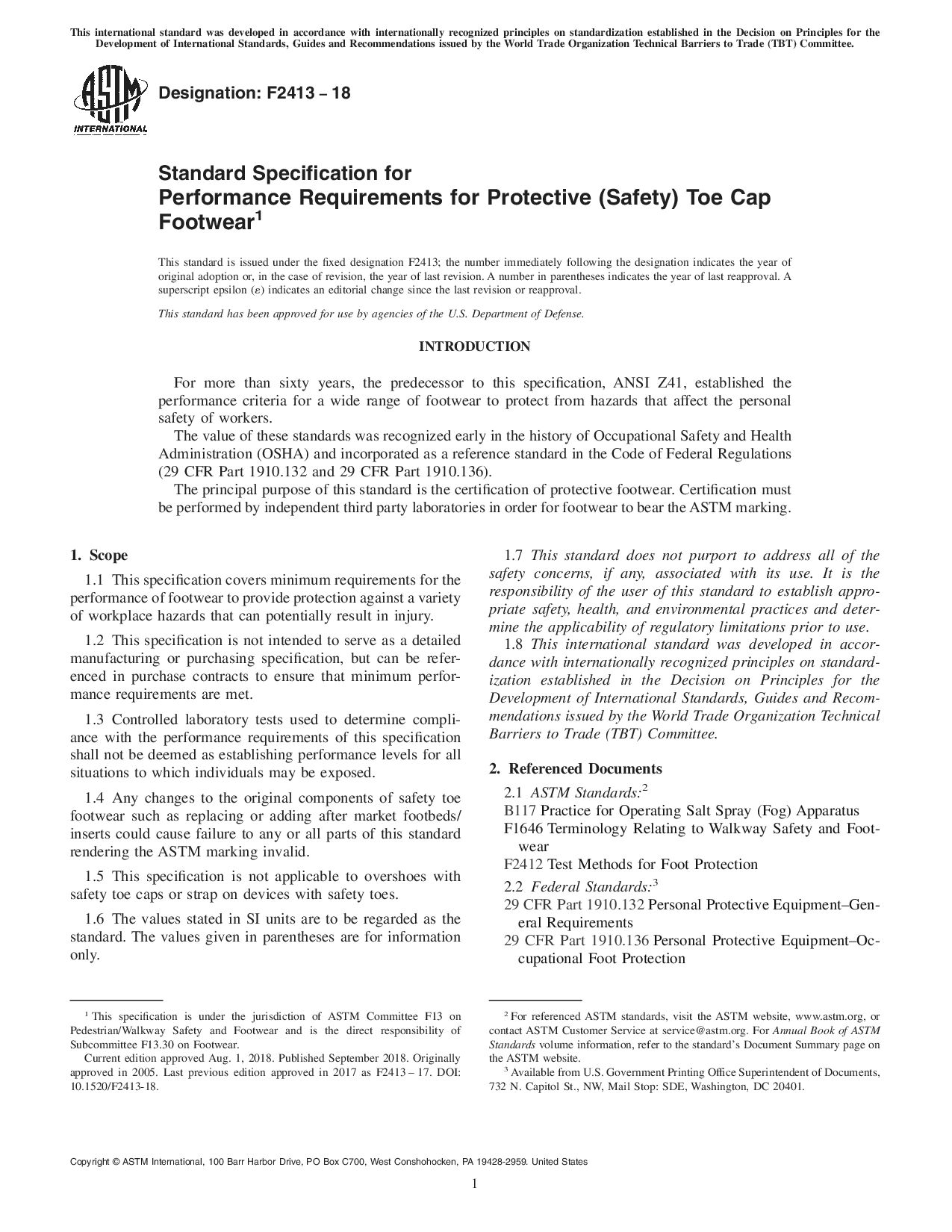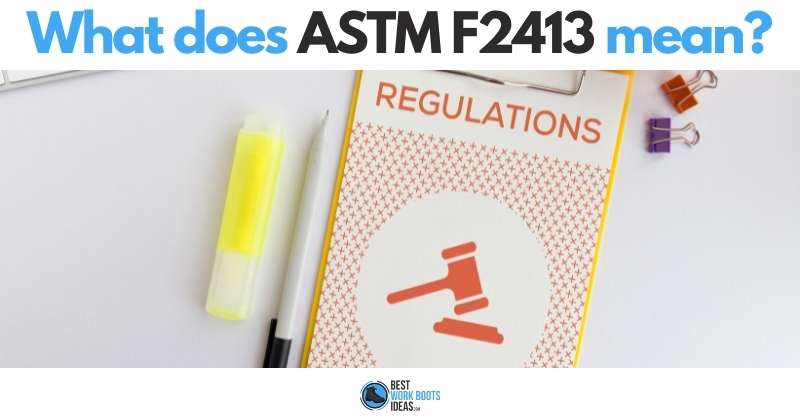What’s Behind the Change: ASTM F2413-05 and ASTM F2413-18
In various industries, safety standards play a crucial role in ensuring the well-being of individuals. The American Society for Testing and Materials (ASTM) develops and publishes technical standards for a wide range of products, materials, and services. One such standard is ASTM F2413, which outlines the performance requirements for protective footwear. As industries evolve and new technologies emerge, safety standards must adapt to address emerging risks and hazards. This is why ASTM F2413 has undergone revisions, with the latest being ASTM F2413-18. The comparison of ASTM F2413-05 vs ASTM F2413-18 highlights the importance of staying up-to-date with the latest safety standards. In this article, we’ll explore the significance of ASTM F2413 and its revisions, and why it’s essential to understand the differences between the two standards.
How to Ensure Compliance with the Latest Safety Regulations
Staying up-to-date with the latest safety standards is crucial for industries to ensure a safe working environment and avoid potential risks. The comparison of ASTM F2413-05 vs ASTM F2413-18 highlights the significance of adopting the newest revisions. Non-compliance with safety standards can result in severe consequences, including workplace accidents, injuries, and even fatalities. On the other hand, adopting the latest safety standards can bring numerous benefits, such as improved safety, reduced risks, and enhanced product quality. To ensure compliance, industries must stay informed about the latest revisions and updates to safety standards. This includes understanding the changes made in the 2018 revision of ASTM F2413 and implementing the necessary measures to meet the new requirements. By doing so, industries can avoid potential risks and ensure a safer and more efficient work environment.
A Side-by-Side Comparison of ASTM F2413-05 and ASTM F2413-18
The ASTM F2413 standard has undergone significant changes between its 2005 and 2018 revisions. Understanding these changes is crucial for industries to ensure compliance with the latest safety regulations. The comparison of ASTM F2413-05 vs ASTM F2413-18 reveals several key differences. One of the primary updates in the 2018 revision is the inclusion of new testing protocols for footwear, which provide more accurate and reliable results. Additionally, the 2018 revision includes updated requirements for footwear materials, design, and performance. These changes aim to improve the overall safety and quality of protective footwear. Furthermore, the 2018 revision includes new guidelines for labeling and marking, ensuring that footwear meets the necessary safety standards. By understanding these changes, industries can ensure that their products and services meet the latest safety standards, reducing the risk of accidents and injuries.
Impact of the Revisions on Industry Practices and Products
The revisions to ASTM F2413 have had a significant impact on various industries, including manufacturing, construction, and healthcare. The changes in the 2018 revision have led to a shift in industry practices, with a greater emphasis on safety and quality. In the manufacturing sector, companies have had to adapt their production processes to meet the new requirements for footwear materials and design. This has resulted in the development of safer and more durable products. In the construction industry, the revised standard has led to a greater focus on providing personal protective equipment (PPE) that meets the latest safety standards. This has reduced the risk of accidents and injuries on construction sites. In the healthcare sector, the revised standard has led to the development of specialized footwear that meets the unique needs of healthcare professionals. The comparison of ASTM F2413-05 vs ASTM F2413-18 highlights the importance of staying up-to-date with the latest safety standards, as non-compliance can result in serious consequences. By understanding the impact of the revisions, industries can ensure that their products and services meet the latest safety standards, reducing the risk of accidents and injuries.
Key Takeaways: What You Need to Know About ASTM F2413-18
The ASTM F2413-18 standard is a crucial guideline for industries that require protective footwear. To ensure compliance, it is essential to understand the scope, requirements, and testing protocols of this standard. The ASTM F2413-18 standard applies to various types of footwear, including shoes, boots, and sneakers, and outlines the necessary performance requirements for impact resistance, compression resistance, and electrical hazard resistance. The standard also provides guidelines for labeling and marking, ensuring that footwear meets the necessary safety standards. In comparison to ASTM F2413-05, the 2018 revision includes updated testing protocols, new requirements for footwear materials and design, and revised guidelines for labeling and marking. By understanding the key takeaways of ASTM F2413-18, industries can ensure that their products meet the latest safety standards, reducing the risk of accidents and injuries. The comparison of ASTM F2413-05 vs ASTM F2413-18 highlights the importance of staying up-to-date with the latest safety standards, as non-compliance can result in serious consequences.
Why the Latest Revision Matters: Real-World Applications and Case Studies
The importance of adhering to the latest safety standards, such as ASTM F2413-18, cannot be overstated. In real-world applications, the consequences of non-compliance can be severe, resulting in accidents, injuries, and even fatalities. On the other hand, adopting the newest revisions can lead to improved safety, reduced risks, and enhanced product quality. For instance, a manufacturing company that adopted the ASTM F2413-18 standard for their protective footwear reported a significant reduction in workplace accidents and injuries. Similarly, a construction company that implemented the latest standard for their personal protective equipment (PPE) saw a decrease in the number of accidents on their construction sites. These case studies demonstrate the importance of staying up-to-date with the latest safety standards, particularly when it comes to ASTM F2413-05 vs ASTM F2413-18. By understanding the benefits of the latest revision, industries can make informed decisions about their safety protocols and ensure a safer work environment. The comparison of ASTM F2413-05 vs ASTM F2413-18 highlights the significance of periodic updates and revisions, ensuring that safety standards remain relevant and effective in protecting workers.
Future-Proofing Your Business: Embracing the Evolution of Safety Standards
To stay ahead of the curve in a rapidly changing regulatory landscape, businesses must adopt a culture of continuous improvement. This involves investing in employee training, implementing proactive safety measures, and staying up-to-date with the latest safety standards, such as ASTM F2413-18. By doing so, companies can ensure compliance with the latest regulations, reduce the risk of accidents and injuries, and enhance product quality. Moreover, embracing the evolution of safety standards can also lead to cost savings, improved efficiency, and a competitive edge in the market. For instance, a company that proactively adopts the ASTM F2413-18 standard can avoid costly retrofits and redesigns, while also improving its reputation and brand image. In contrast, failing to adapt to changing safety standards can result in severe consequences, including fines, penalties, and even legal action. By understanding the importance of ASTM F2413-05 vs ASTM F2413-18, businesses can make informed decisions about their safety protocols and ensure a safer and more efficient work environment. By future-proofing their business, companies can stay ahead of the curve and reap the benefits of a proactive approach to safety.
Conclusion: Staying Safe and Compliant in a Changing Regulatory Landscape
In conclusion, understanding and complying with the latest safety standards, such as ASTM F2413-18, is crucial for ensuring a safer and more efficient work environment. The evolution of safety standards, as seen in the comparison of ASTM F2413-05 vs ASTM F2413-18, highlights the importance of staying up-to-date with the latest regulations. By adopting a culture of continuous improvement, investing in employee training, and implementing proactive safety measures, businesses can future-proof their operations and reap the benefits of improved safety, reduced risks, and enhanced product quality. As the regulatory landscape continues to change, it is essential for industries to stay informed and adapt to the latest standards, such as ASTM F2413-18, to ensure compliance and maintain a competitive edge. By doing so, companies can protect their employees, customers, and reputation, while also avoiding costly fines and penalties. In today’s fast-paced and ever-changing world, staying safe and compliant is not only a moral obligation but also a business imperative.


